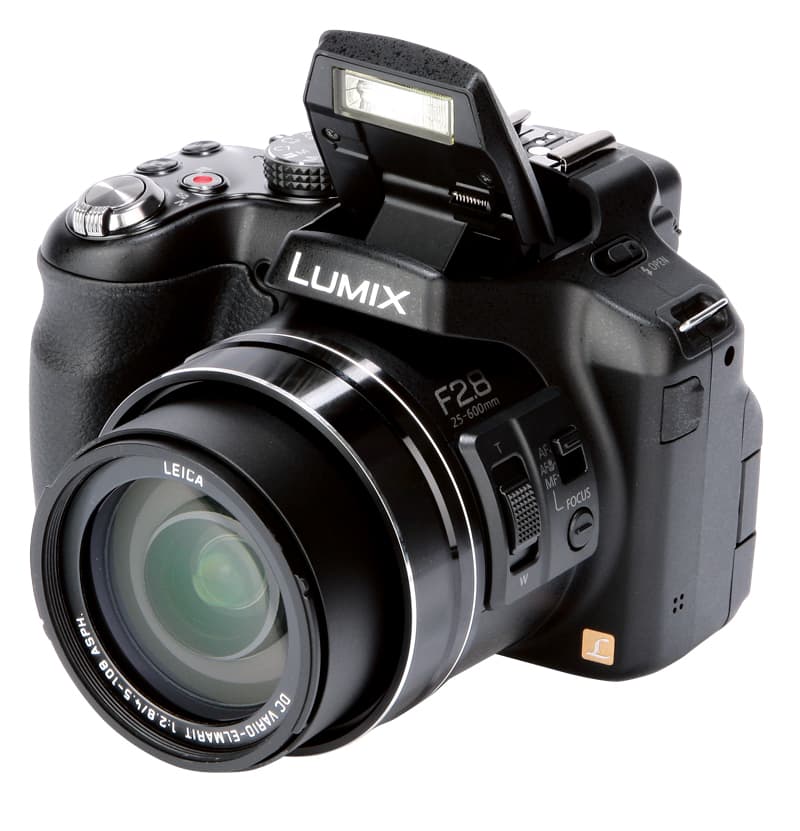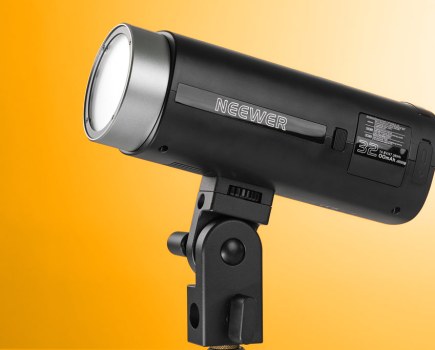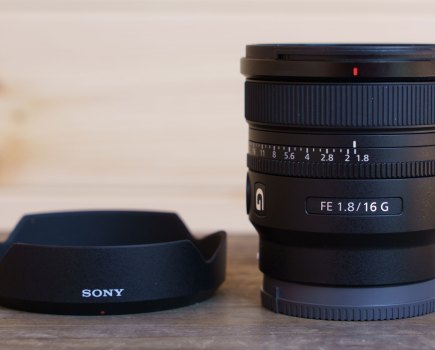Panasonic Lumix DMC-FZ200 at a glance:
- 12.1-million-pixel, 1/2.3in CMOS sensor
- 24x, 25-600mm-equivalent f/2.8 lens
- 1.312-million-dot-resolution EVF
- Raw + JPEG shooting
- 3in, 460,000-dot articulated LCD screen
- Street price around £540
Panasonic Lumix DMC-FZ200 review – Introduction
Bridge cameras occupy a strange place in the camera market. Travel-zoom compacts now have extraordinary zoom lenses, manual shooting modes and sometimes raw shooting, while compact system cameras (CSCs) also offer a smaller, lighter and often cheaper alternative to a DSLR. To compete in what is a very competitive market, bridge cameras have become much more advanced.
To start with, the huge zoom lenses on bridge cameras seem to be constantly getting longer, but there have also been improvements made to the sensors used in the cameras, as well as the range of features on offer. The Panasonic Lumix DMC-FZ200 is no exception.
While on the surface the FZ200 appears to be much the same as its predecessor, the Lumix DMC-FZ150, advances have been made, most notably in the lens, which has a constant f/2.8 aperture throughout its entire 24x zoom focal length. This should make for a significant improvement in how the camera handles when shooting at its 600mm equivalent focal length.
I was particularly keen to see just how the lens would work in tandem with the improved 12.1-million-pixel CMOS sensor. It is the small, compact-camera-sized sensors in bridge cameras that make them capable of such large equivalent focal lengths in what are fairly compact bodies – yet these same sensors are also their Achilles heel, as the small size means the images they produce are noisier with a smaller dynamic range compared to a CSC or DSLR. That said, the main selling point of bridge cameras is the flexibility they offer over compacts, so does a little extra noise really matter?
Features
At the core of the Panasonic Lumix DMC-FZ200 is a 12.1-million-pixel, High Sensitivity MOS sensor that is 1/2.3in in size, or approximately 6.17×4.55mm. This is a standard size for a compact camera sensor, and is smaller than the 1/1.7in (7.6×5.7mm) sensors in high-end models such as the LX7. The difference in size may seem small, but it equates to a difference in surface area of more than 50%, which is significant when you consider that its surface packed with 12.1 million photodiodes.
Handling the data created by the sensor is Panasonic’s Venus processing engine, which the company claims will ‘elevate the response, sensitivity and image quality of the DMC-FZ200 to an even higher level’. There are few improvements to the camera’s actual shooting specification – the most notable is an increased maximum shutter speed, from 1/2000sec in the FZ150 to 1/4000sec in the new FZ200. Sensitivity is also increased by 1EV, with a new extended setting of ISO 6400. Previously, ISO 6400 was only available when shooting in High Sensitivity mode.
As with most bridge cameras, both raw and JPEG images can be recorded, with the former proving useful for those wanting to squeeze every last ounce of detail from the 12.1-million-pixel sensor. Two other notable improvements include a fairly substantial increase in the resolution of the electronic viewfinder (EVF), from the FX150’s 201,600 dots to 1.312 million dots in the FZ200, although the display still remains a small 0.21in size. The other is a constant f/2.8 aperture throughout the 24x optical zoom range of the lens, whereas on the FZ150 it is f/2.8-5.2. While it may seem like a small increase to the maximum aperture setting at the longest focal length, it is significant, particularly for those who will make good use of the 600mm equivalent setting. There will be more to come on the EVF and zoom lens later in this test.
Leica DC Vario-Elmarit 4.5-108mm f/2.8 zoom lens

Apart from the DSLR-like handling, the main reason for choosing a bridge camera over a compact is for the extraordinary zoom lenses they pack. Designed by Leica, the DC Vario-Elmarit 4.5-108mm f/2.8 zoom lens is constructed of 14 elements in 11 groups, with a total of five aspherical lenses and nine aspherical surfaces. Three of the other elements are of extra-low dispersion (ED) glass, to help reduce chromatic aberration and retain contrast, while a single element has a Nano Surface coating that helps to reduce ghosting and reflections.
Image: Chromatic aberrations are removed in-camera and automatically by the supplied SilkyPix raw editing software
However, the most impressive thing is not the focal length, but rather the constant f/2.8 aperture sported throughout its range. Previously on lenses such as this, the aperture would have been f/2.8-5.6, or even f/2.8-6.3. Although the difference may seem slight, it is significant when shooting a 600mm. Being able to shoot at 1/250sec rather than 1/125sec or even 1/60sec can make a big difference with regard to whether camera shake will affect the image.
The combination of the large aperture and the excellent Power Optical Image Stabilisation (OIS) means that it is possible to use the maximum focal length handheld. I was able to shoot using the 600mm equivalent focal length at the Paralympics, with the exposure set to 1/650sec at f/2.8 and ISO 800, and as the event drew on even 1/250sec was still just about fast enough to freeze the motion of the athletes and not have to worry about camera shake.
Of course, there will always be compromises with such an extreme lens. Image quality is at its best when the lens is set almost to its widest point. As the focal length increases there is a loss of contrast and sharpness, but results are still acceptable.
Distortions are also an issue. Panasonic is notorious for correcting as many of these as possible in-camera when shooting JPEGs, and there is no option in the menu to switch these corrections off. That said, the corrections made are very good, although not perfect. There is slight barrel distortion at the widest focal lengths, with pincushion at the longest, and some chromatic aberrations can be seen on highlight edges.
Loading a raw file will usually show exactly how much correction has taken place. By default, however, raw files taken on the FZ200 and loaded into SilkyPix software have had automatic corrections applied. Only by delving into the Lens Corrections palette and manually adjusting the settings can you see how much distortion and chromatic aberration the image really suffers from. Given the target audience for this camera, and the fact that correcting the aforementioned distortions is usually one of the first things you would want to do, I don’t see much of a problem with the raw-conversion software correcting the flaws of the Leica DC Vario-Elmarit 4.5-108mm f/2.8 zoom lens.
Build and handling

In terms of both size and design, the Lumix DMC-FZ200 is very similar to Panasonic’s own G2 compact system camera. The polycarbonate body is well built and feels solid, with no creaks, unwanted movements or parts that feel flimsy. The handgrip is fairly large with a contoured shape and textured rubber grip that makes it comfortable to hold. On the opposite side of the handgrip sits a small bump on which to rest the thumb. This really helps when it comes to holding a camera securely, especially when stability is an issue, such as when using the FZ200’s full extent of the zoom lens.
The placement of buttons and controls on the FZ200 is fairly standard, with nothing untoward or unusual in their placement. Everything is logically placed, and most photographers should have no problem just picking up the camera and getting started. Direct controls are in place for all the most used settings, with a large dial on the camera’s top-plate allowing the different shooting modes to be accessed quickly. On the rear are buttons for white balance, AF, metering and ISO sensitivity, while three custom Fn buttons allow speedy access to the user’s own favoured menu items. On top of all this, there is a quick menu button that allows access to almost everything the photographer could want to change, including the image colour mode.
On the side of the lens are further buttons that switch between standard AF, macro AF and manual focus modes, and there is even a separate focus button in addition to the standard half-press of the shutter button to focus the lens. For video purposes, a zoom-control slider switch is also fitted to the side. This makes it easy to adjust the speed of the lens as it zooms back and forth, which avoids jerky movements when shooting video.
There is very little to dislike about the FZ200’s handling, and in this respect it is on a par with most recent bridge cameras. If asked to nitpick, all I can really come up with is the fact that the memory card is inserted into the bottom of the camera in the same place as the battery. This is slightly annoying if it is necessary to change memory cards when the camera is mounted on a tripod, but this is never going to be an everyday situation, especially as I shot around 250 raw + JPEG images on an 8GB memory card. If shooting JPEGs only, experience tells me that closer to 750 images can be expected when using an 8GB card.
Metering
In general use, there was little to fault with the Intelligent Multiple evaluative metering system of the Lumix DMC-FZ200. Images are bright, have a good level of contrast and the colours are quite vivid, which I will discuss in more detail later. The metering system seems to pay little attention to smaller highlight areas in a scene, instead looking at the overall picture and making sure that it is well exposed. For the most part this system works well, and the vast majority of users will be happy with the outcome. However, I found that I left the exposure compensation set to -0.33EV for most the time I was shooting, just to preserve a fraction more detail in highlight areas, especially as there is more chance that some detail can be recovered from raw image data. Despite this slight tweak, exposures in evaluative mode were generally spot on. Even when given a fairly complex metering task – a backlit woodland, for example – the metering did a good job of lightening the trees just enough to make them clear, while still leaving some dark shadow detail.
For novices, the iAuto mode works very well. By using a combination of evaluative metering, focal length, focus distance, and scene and face recognition, the iAuto system will attempt to detect what is being photographed and alter the exposure and image settings accordingly. When switching between macro, portrait and landscape scenes, this setting worked well, and point-and-shoot users should feel confident.
Autofocus

Image: The 24x zoom range is really about as much as most casual photographers will ever need
In the past few years Panasonic has made big leaps forward in the speed of the contrast detection AF systems in its G-series CSCs, and now it would appear that this technology has found its way into the Lumix DMC-FZ200. While the bridge camera cannot claim to be as fast as models in the G series, it is certainly quick, especially given the range of the zoom lens. At short distances the lens snaps quickly into focus, although at 600mm switching between a subject at the minimum distance and infinity takes a second or two. It will also occasionally hunt bit more if focus is suddenly switched from infinity to something just a few metres away.

Image: Shot from a few metres away in the FZ200’s macro mode, the camera has done a good job of picking up the fine dew in the cobweb
Having a dedicated AF button on the side of the camera makes it quick and easy to change the AF point: the left hand hits the button on the lens, and the right uses the directional controls on the rear of the camera.
In manual focusing mode, this AF button acts as an autofocus override, which is useful considering that focusing the lens manually is slow and a little awkward to do accurately, despite an enlarged section of the image being shown on screen.
Due to the size of the sensor, the camera’s macro mode isn’t truly 1:1, but with a 1cm minimum focusing distance from the end of the lens, it is close enough.
Using the macro mode is also one of the few times when switching the FZ200 to manual focus may be advantageous, although even when as close as 1cm the AF still snaps into focus.
Dynamic range
This is one of the areas where a compact camera sensor will struggle against one of a larger format. Although the Panasonic DMC-FZ200 may be physically larger than a compact, the fact its sensor is the same size as a compact’s means that its dynamic range will be just as restricted. As such, the FZ200 behaves as would be expected, with highlights seeming to blow out quickly. This is particularly noticeable in blue skies, where white fluffy clouds appear devoid of detail.
That said, the metering system generally deals with difficult situations well, minimising burnt-out detail as much as possible while still illuminating the rest of the scene sufficiently. An HDR mode is also available, which shoots three JPEGs at different exposures and combines them to create a single image. Combined with the camera’s decent image stabilisation, this mode works well in landscape situations with no moving subjects.
White balance and colour
The colours in JPEG images produced by the Lumix DMC-FZ200 are very bold, even in the standard colour mode. When set to vivid, I found that the colours, particularly the reds and greens, became an almost a solid mass of colour. Unless a particularly pop-art style is desired, the standard colour mode should be adequate.
Auto white balance works well. The only situation I found that really fooled it was when photographing in dense green woodland. Here, the AWB responded to the large expanse of green foliage by adding lots of purple to neutralise the green. This is a common effect with most digital cameras, so I don’t note it as a particular failure of the FZ200. Switching the camera to the overcast or sunny daylight setting produced a good well-balanced result. And, of course, as the FZ200 is able to shoot raw images, the white balance and colour of these files can be easily tweaked in post-production.
Viewfinder, LCD, live view and video

Unchanged from the earlier FZ150 is the Lumix DMC-FZ200’s 3in, 460,000-dot, articulated LCD, which is very good, especially when I am more used to using the 3in, 921,000-dot screens commonly found on DSLRs and CSCs.
The screen has a good level of anti-reflective coating, and while in very bright conditions there will obviously be some reflections, it is possible to still see the screen display. It also has quite a high viewing angle, which when paired with the screen’s articulated mechanism, means that it is easy to shoot at very low or high angles.
I must also reserve some praise for the EVF. The increase from 201,600 dots to 1.312 million dots is significant. The type of low-resolution viewfinder found in the FZ150 is one of the reasons why EVFs are so criticised, but the increase in resolution makes a huge difference. That is not to say the EVF in the FZ200 isn’t without its flaws, as it is still fairly small, even compared to an entry-level DSLR, and it seems as though the viewfinder image is quite far away when the camera is held to the eye. It also shows sensor wobble, whereby straight edges become slanted when panning the camera from side to side. However, there is little in the way of lag, and once an image is focused and framed it is easy to convince yourself that you are looking through an optical viewfinder.
As we have seen in Panasonic’s micro four thirds G-series cameras, video is a priority, and rightly so given the possibility of linking the cameras to one of the company’s range of televisions. Impressively, the FZ200 can shoot 1920×1080-pixel full HD video footage at a rate of 25fps, with the actual sensor output being 50p. Footage is saved in the AVCHD format at a bit rate of 28Mb/s. A stereo microphone is built into the camera’s top-plate, where it sits just behind the pop-up flash, and there is also a micro-jack socket for an external microphone to be used. As is now standard, an HDMI socket sits on the side of the camera to allow direct connection with a TV or other AV device. With very good image stabilisation and the slow zoom toggle switch on the side of the lens, the FZ200 is a great camera for those shooting video, although it won’t be possible to achieve the very shallow depth of field effects that can be obtained from a DSLR, due to the small size of the sensor and the shorter actual focal length of the lens.
Noise, resolution and sensitivity

These images show 72ppi (100% on a computer screen) sections of images of a resolution chart, captured using the Panasonic Lumix DMC-FZ200’s lens set to 105mm. We show the section of the resolution chart where the camera starts to fail to reproduce the lines separately. The higher the number visible in these images, the better the camera’s detail resolution is at the specified sensitivity setting.
With a small 12.1-million-pixel sensor, the Lumix DMC-FZ200 just about manages to resolve up to 24 on our resolution test chart. This is about as much detail as could be expected, and is on a par with other 12-million-pixel models we have tested, whether DSLR or compact.
As the sensitivity increases, the resolution starts to drop quickly. Luminance noise and the effects of noise reduction start to take their toll on the resolution of JPEG images, and by ISO 400 the FZ200 reaches just 20 on our chart. By the time the maximum ISO 6400 setting is reached, a resolution of only 16 is achieved, with luminance noise very apparent. There are also signs of magenta and green colour noise, although it would appear that heavy colour noise reduction has also caused the image to become desaturated and to lose contrast.
What is far more important, though, is how real-life scenes are rendered. For the most part, the high-sensitivity settings will not be used and I found there were only a few images, such as when shooting athletics at the Paralympics, that warranted me increasing the sensitivity beyond ISO 800.
At the lower sensitivities of ISO 100 and 200, images are as detailed as can be expected, but have a hint of luminance noise, although nothing of too much concern. It was at ISO 800 that I found the tipping point. Above this, the noise reduction really kicks in, and images have blurred and smudged areas, with odd oversharpened-looking pixels. While this is not a concern when viewing on screen or for small prints, those wanting to make decent-sized prints should aim to stick to ISO 100 for best results. Of course, the FZ200 isn’t alone in having this type of image quality or noise reduction, as it is common among nearly all compact cameras.
 Shooting raw images does allow far more control in post-capture editing. At the moment, Adobe Camera Raw does not support the Panasonic RW2 file format from the FZ200, so for now images must be edited using the bundled SilkyPix Developer Studio software.
Shooting raw images does allow far more control in post-capture editing. At the moment, Adobe Camera Raw does not support the Panasonic RW2 file format from the FZ200, so for now images must be edited using the bundled SilkyPix Developer Studio software.
I find this software a little awkward to use, although with patience it does produce good results. Colour noise can be reduced significantly, and compared to a JPEG image, raw files can be sharpened a bit more, although little extra resolution is revealed.
Image: The 600mm equivalent focal length is ideal for wildlife images, and if you don’t mind luminance noise, slightly more detail is seen in raw files compared to in-camera JPEGs
The competition

Image: Fujifilm X-S1
Featuring the same 12-million-pixel resolution as the Panasonic Lumix DMC-FZ200, the Fujifilm X-S1 resolves about the same amount of detail, although it has the added advantage of a larger 2/3in (8.8×6.6mm) sensor. This gives the X-S1 a surface area 103% larger than the sensor of the FZ200, so the camera’s photosites can also be larger. This helps improve image noise and dynamic range. The X-S1 zoom lens is slightly larger, being equivalent to 24-624mm, although its maximum aperture is f/2.8-5.6, unlike the FZ200’s constant f/2.8 throughout the range. The X-S1 is also larger and is around the same size as an entry-level  DSLR.
DSLR.
Image: Canon PowerShot SX40 HS
Canon’s PowerShot SX40 HS also a 12.1-million-pixel sensor, but it has an even more powerful 35x optical zoom lens that is equivalent to 24-840mm. However, there are few situations in which most people will use even 600mm, let alone 840mm.
Our verdict
Although they may seem like slight changes, the new EVF and the increase in maximum aperture throughout the zoom range make the Panasonic Lumix DMC-FZ200 a notable improvement over the FZ150. The small sensor is always going to be a compromise in a bridge camera, so until technology advances it is wise for Panasonic to have chosen to stick to the 12.1-million-pixel sensor and not push it to a 14 or even 16-million-pixel resolution.
While the bridge camera market is crowded, the Panasonic FZ series has proved extremely popular over the years, and this latest model should be no exception. For those wanting the control of a DSLR but with the features of a compact camera, it strikes a very nice balance. In the right hands, it is a very capable camera, particularly for those who might want to try their hand at wildlife photography but without the huge expense of expensive telephoto DSLR lenses.
Panasonic Lumix DMc-FZ200 – Key Features
EVF/LCD button
There is no automatic sensor for the FZ200’s EVF, so this button must be pressed to switch
between the EVF and LCD
Articulated screen
The 3in, 451,000-dot screen is hinged onto the side of the camera, which should help when taking low and high-angle shots, or self-portraits
Hotshoe
As well as a pop-up flash, the FZ200 has a hotshoe that is fully compatible with the Panasonic flashguns for G-series CSCs
Quick menu
In playback mode, this button is used to delete images, but when shooting it acts as a quick menu button, displaying the most commonly used shooting and image settings
Image styles
As well as the standard colour setting, vivid, natural, monochrome, scenery, portrait and custom settings can also be selected. The level of contrast, sharpness, colour saturation and noise reduction can be adjusted in any of these image styles
HDMI and video port
On the side of the Panasonic FZ200 is an HDMI port. This allows an HDMI cable to be connected so that images can be viewed via a compatible television screen. There is also an AV socket that works with a compatible micro-USB-to-AV cable
Battery
Panasonic claims that 540 shots are possible with the FZ200’s battery. I found that I was able to take almost 300 raw and JPEG images, with heavy use of the screen and menus. This is a more realistic figure in a real shooting situation
UHS-1 memory
As well as being compatible with SD, SDHC and SDXC memory cards, the FZ200 is also compliant with the UHS-1 standard, which means that faster SD transfer speeds can be achieved with compatible cards. It also has 70MB of built-in memory







